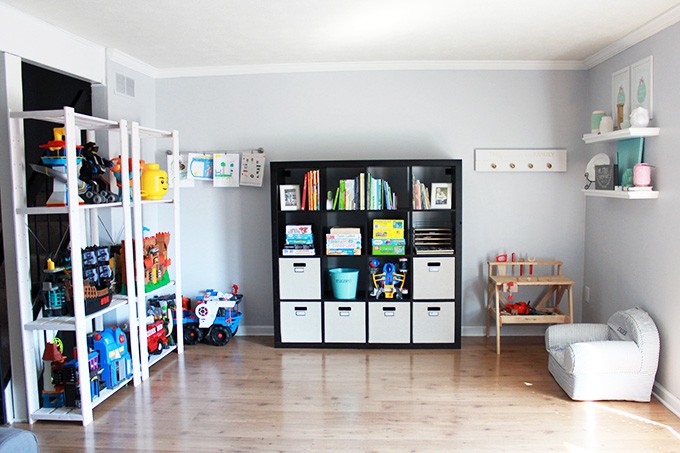How to Instantly De-Stress in the Office
Posted by Editor in Uncategorized on Jan 30th, 2019 | Comments Off on How to Instantly De-Stress in the OfficeNon-stop emails, endless deadlines, countless of tasks to complete—the next thing you know, it’s two in the afternoon and you missed your lunch (again). Although nobody said that office life is easy, if you are stressed every single day from nine to five, it’s important to know how to pause and take a break every few hours when you’re at work.
Workplace stress can be detrimental to your mental, emotional and physical health, so make sure to address the issue right away and keep in mind these instant stress busters.
- Avoid Another Cup of Coffee
Sure, a cup of coffee is needed to wake your senses up in the morning, but downing more cups of Joe throughout the day isn’t good for you. Instead of having too much of this anxiety booster in your system, try some green tea, which contains less than half caffeine than a cup of americano and the amino acid theanine to help you calm your nerves.
- Listen to Music
Listening to upbeat songs can do wonders in improving your mood, so slip on your headphones and play your favorite tunes. If you want to relax or take a nap, play slow instrumental music. On the other hand, if you want to stay awake throughout the afternoon, get some dance music playing.
- Get Up and Take a Walk
Going out during your tea break can help relax your mind. Take a short walk around the block to catch some fresh air, effectively releasing feel good hormones that lifts your mood instantly. And while you’re at it, stretch your shoulders, back and legs to release the tension and relieve stressed out body and mind.
- Keep Aromatherapy Oils
Studies show that aromatic oils are helpful in stressful times. Get a few roll-on essential oils and set them on your office table. Menthol scents to increase your concentration, flowery citrus scents to boost your energy and green tea scent to help clear your mind.
- Breathe Deeply
A few deep breaths also help reduce tension, relax the neck and muscles and relieve anxiety and stress. When you breathe deeply, your body inhales more amount of oxygen, regulating the flow of blood, which relaxes your body. Slow and deep breaths also increase oxygen circulation in the brain and slows down your heart rate, leaving you feeling more peaceful.
- Look Out the Window
Take your eyes off from the computer monitor for a few minutes and gaze out the window to let your mind wander. Looking at the greenness of nature (not the wallpaper on your computer screen!) relaxes your body and mind. And did we tell you that daydreaming is an effective way to boost your creativity and problem-solving ability?
While there are unlimited ways to help reduce stress, you simply cannot eliminate stress altogether. There are certainly so many things to worry about; it’s simply up to you how you will handle them in such a way that you still live a happy and peaceful life.
5 Unconventional Travel Activities for the Adventurous Soul
Posted by Editor in Uncategorized on Jan 30th, 2019 | Comments Off on 5 Unconventional Travel Activities for the Adventurous SoulMost activities we include in our travel bucket list are from those we often see from our social media feeds—sky diving, ice skiing, bungee jumping, the list can go on and on. While we do not want to miss out on the most popular activities, there’s just a different kind of pleasure when you’ve done something that most travelers have not.
So, prepare to experience something different. As for the following destinations, brace yourself for more unique experiences to satisfy the adventurous side of you.
- Shark Diving in Malapascua
Here in Southeast Asia, you can have your own Jaws experience. in fact, it is probably the only place in the world where you can swim with sharks. Don’t be afraid though, these sharks are relatively harmless, but it will require you to secure a deep-water certification. Located in the Philippines, Malapascua offers a peaceful diving spot for the sea lovers out there.
- Attending a Top-Secret Party in Singapore
How about an exclusive dinner party with a secret venue that you will only be given clues about on the day of the party? Andsoforth’s concept can be intriguing, but be warned: it sells out fast! If you’re lucky enough to secure one, you will surely find yourself enjoying their entertainers and their luxurious feast.
- Swinging Over Bali Jungle
All of us have experienced in our childhood to fight for a playground swing. but if it’s a swing tied on a tree on the edge of a cliff, would you still want to play with it? Bali is known for it’s Instagram-worthy spot—the Bali Swing, which is located in a small village hung on top of a hill and swings over a dense jungle of palm trees.
- Taking a Night Walk in Malaysia’s Oldest Rainforest
You will surely see a unique variety of insects, plants and birds at Taman Negara, Malaysia’s biggest and oldest national park and rainforest. If you are lucky, you may even spot a wild boar, tapir and deer around the forest.
- Volcano Trekking in Indonesia
If you are someone who loves hiking, you’ll surely love to explore steaming volcanoes in Indonesia. Take your peak (pun intended) and enjoy the sea of clouds and puffs of smoke when you get at the top. For beginners, try Indonesia’s Gunung Agung and Gunung Batur peaks, which can be journeyed in a day; or for the pros, the Gunung Rinjani, which takes three days to get to the peak.
Whether you are looking for an adrenaline rush, an intense workout or just want to learn something new, there’s more you can do than boating on a river or go scuba diving. Feed your adventurous soul with these activities and immerse yourself to the fulfilling experiences of these travel ideas.
A Beginner’s Guide to the Different Types of Tea
Posted by Editor in Uncategorized on Jan 4th, 2019 | Comments Off on A Beginner’s Guide to the Different Types of TeaAll tea in the world comes from the same plant, Camellia sinensis, but why are there hundreds of kinds of teas with their own appearance, flavor, and aroma? The answer lies in the way they are cultivated.
Much like wine or coffee, factors such as climate, humidity, rainfall, and soil acidity can influence how the tea tastes from harvest to harvest, as well as from one region to the next. The different varieties of tea also reflect how much a tea is oxidized to bring out specific flavors and aromas.
While there are hundreds of tea varieties all over the world, the following are some of the most common that you can find. Most, if not all, are often variations of the preparation process that are close to one of the following:
White
White tea has the most gentle and delicate flavors and aroma among the major tea varieties, which can be fresh, or sometimes even earthy.
This is because white tea is the least processed and oxidized among the other varieties, and harvesting the leaves is meticulous work done only a few days a year. To prevent oxidation, the tea shoots allowed to wither and dry.
Green
While Chinese green tea has a more yellowish appearance, Japanese green tea has a range of colors, from pale to deep green.
However, the similarity of these types of green tea lies in heat-treating to prevent oxidation. While white tea shoots are allowed to wither, green tea leaves are heat-treated, either by pan-firing or steaming at a high temperature.
Oolong
Also called wulong, oolong tea is semi-oxidized by bruising the leaves by being shaken in baskets. To stop the oxidation, the leaves are then heat-treated using methods that vary based on the region, which in turn creates different flavors.
Oolong tea is usually characterized as having a flowery or fruity taste, but can also have a smoky flavor.
Black
This tea is known in China as “red tea”, and is the most famous variety in the West. Black tea is the most oxidized, as the leaves begin to wilt once picked, and the process is sped up by crushing or rolling them.
Black teas are often split up into two categories: broken and full-leaf. Broken leaf black teas have leaves that are broken into smaller pieces before they are processed, and tend to be higher in caffeine, while full-leaf teas are gentler.
Pu’er
This is a type of tea that is actually fermented, consisting of larger leaves that can be withered and aged for several years at a time.
This tea is often characterized by a hearty brew with a low caffeine content, and the resulting taste lacks the sharpness otherwise found in other types of tea.
5 Crucial Things You Need to Do Once the Wedding is over
Posted by Editor in Uncategorized on Jan 4th, 2019 | Comments Off on 5 Crucial Things You Need to Do Once the Wedding is over“Now what?”
This is the question that you will eventually ask, and should be a question that you have several answers for.
However, people respond to situations differently. Sometimes, the stress of planning and coordinating a wedding to make sure everything goes smoothly can suddenly be replaced by that feeling of sadness once the wedding is over.
While it can be easy to feel a little deflated, the planning is not quite over yet. Here are a few crucial things you need to do to wrap everything up and fully settle into married life:
1. Say “thank you”.
Getting caught up in the whirlwind of planning your wedding itinerary can be stressful and may make you want to unwind, but the first thing you need to do after the wedding is to thank the guests who came – especially the close friends who came from out of town.
2. Spend time as a married couple.
Feeling the post-wedding blues is normal, but it’s important to get over it by actually spending time with your partner as a married couple.
You can take this opportunity make dinner at home more romantic by lighting a few candles or take a detour from work – anything, really, as long you focus on the small things that make you feel loved, secure, and warm on a daily basis.
3. Take care of your finances.
Planning your wedding has most likely put a considerable drain on your accounts, and with a new chapter of your life comes a new set of financial challenges that you need to slog through to keep your status situated.
However, you don’t have to work through your problems alone. Be sure to sit down and discuss your financials with your partner, and be open and honest about everything when you do.
4. Set up house.
Whether you’re already living together or one of you is moving in with the other, make sure that people know where to look for you. (If you’re not already living together,
For instance, changing the address forms of your credit cards and utilities or adding your name or your spouse’s name to the lease agreement will help make things easier not just for the people who need to find you, but for yourselves as well.
5. Start making plans.
It could be for anything – buying a new home, travelling somewhere for your vacation, your first anniversary, or even just a simple dinner plan or a fun night at the movies – but the important thing is that you’re looking forward to spending time with your partner for the rest of your life.
Get Better at Your Social Skills with These 4 Simple Tips
Posted by Editor in Self-Improvement on Nov 28th, 2018 | Comments Off on Get Better at Your Social Skills with These 4 Simple TipsBeing socially anxious can make it more difficult for you to communicate your thoughts and opinions more openly, but the good news is that there are ways that you can be more assertive and express yourself in a more honest and respectful way.
With assertive communication, you not only allow yourself to relate to others more genuinely, but it also gives you more confidence in meeting other people and living your own life.

Here are a few simple tips to get you started on your social skills:
1. Start small.
If you find yourself in an open area, you can practice your conversational skills with just one person you don’t know.
You can do this simply by saying “thank you” to the clerk at the grocery store or the waiter in the restaurant when he/she takes your order, which is crucial if you’re not good with spending a lot of time in large crowds.
2. Maintain eye contact the right way.
A lot of people have trouble maintaining eye contact during conversation. While some don’t look other people in the eyes at all, others hold it for too long and come off as unintentionally creepy.
The trick is to get yourself used to looking at people in the eye, and you can do this by practicing in the mirror by staring at yourself.

While you may feel uncomfortable and weird at first, try to keep your gaze with your own reflection in the mirror. The discomfort is part of the exercise, and doing this lets you familiarize yourself with the subtle signs that other people are uncomfortable.
3. Keep your questions open-ended.
To start a conversation, you want something that will start more than a “yes” or a “no” – you want to encourage others to engage in the question and have something interesting, instead of you simply trying to make chit-chat with no results.
A great conversational starter is anything outside a “yes-no” question, and by opening the door for others, you allow them to bring their own thoughts to the table and engage.

4. Record yourself talking to yourself.
Mirror-work is perhaps the best way to get you started on picking up certain cues and improving your conversation.
Start by sitting down in front of your laptop, smartphone, or your camera, and hit record, then start talking as if you’re engaged in a conversation with someone else. Do so for at least five minutes before stopping.
Once you’re done, stop, and play back the video. Carefully observe yourself and try to watch despite the initial discomfort, and look for certain tics and subconscious gestures that make you more self-conscious. By identifying them and being aware of them, you can change them.
5 Easy-to-Start Habits to Make Your Life More Organized
Posted by Editor in Self-Improvement on Nov 28th, 2018 | Comments Off on 5 Easy-to-Start Habits to Make Your Life More OrganizedBeing organized is the best way to take control of your life, and it’s not just something you do at the start of every year – it’s something you can do at any day, and at any time. Ideally, the best time you can start is right now, at this moment.
Here’s how you can get started making your life more organized:

1. Get everything written down.
The first step to remembering something is getting it written down, and this is where planners, or even a simple notebook, can really come in handy.
In a lot of cases, a simple notebook is even better than a planner as it could help you jot down almost anything that you came across but don’t want to forget, such as sudden chores, tasks, or things could help you get closer to your goals.
2. Give your things a place where they should be.
The phrase “getting rid of clutter” doesn’t always mean “throwing away stuff” – it also means putting stuff back in their place after using them. If you find that your room or desk is messy, now is the best time to put things back in order.
Once you see that you room is a lot cleaner and more organized than before, you can start to appreciate the amount of space that your room actually has.

3. Know when to get rid of things you don’t need anymore.
If your room is bursting with stuff, it might be time to start getting rid of the ones you don’t need or haven’t used for a long time. While this usually means getting rid of physical things to include only the ones you use, this also extends to other aspects of your life.
You should also make it a point to de-clutter regularly. Because stuff doesn’t organize on its own (instead, it either clutters or builds up), you need to take the time to clean house.
4. Get an app.
An app that reminds you of the things in your to-do list for the short- or long-term is one way to motivate you to get started on your track. The good news is that there are all kinds of these organizing apps that can help you out, and they’re both easy and fun to use.

5. Lay out your clothing for the next day.
Being prepared for the day ahead and laying things out for easy access when you need those lets you reinforce your other habits, which can help you become a more organized person.
For instance, you can lay out next day’s work clothes or uniform the night before, or before getting into the shower, which can save you a lot of time when getting ready for school or work.













